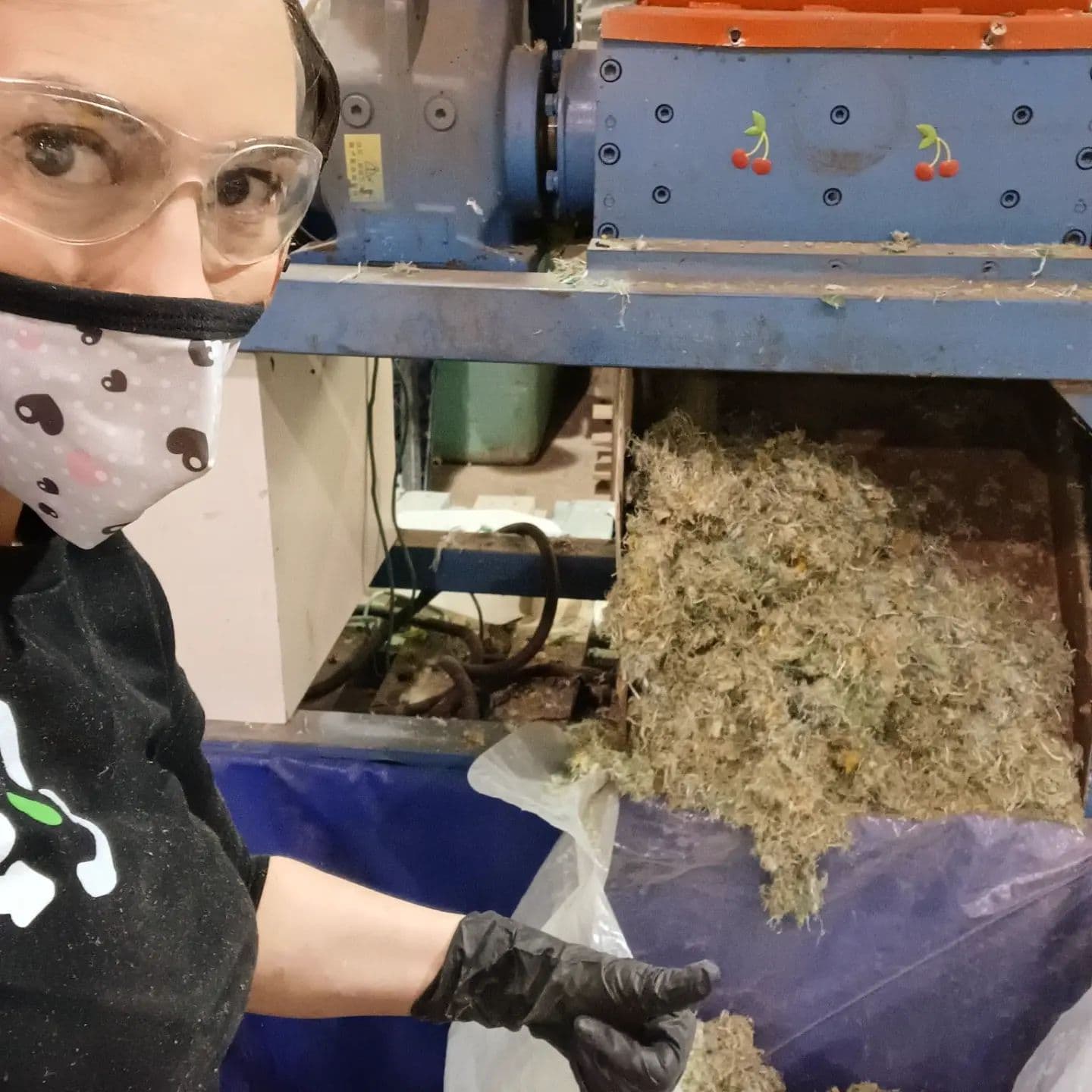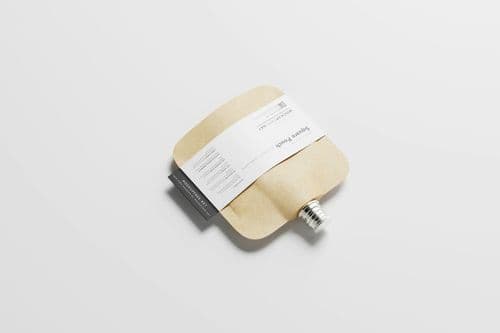Key Points
- Composition & intent: PLAEX-crete™ is a proprietary composite with >90% recycled content (mixed plastics plus mineral construction waste), designed to redirect hard-to-recycle streams into durable building elements.
- Performance profile: Comparable compressive strength to standard concrete with higher ductility and impact resistance; ~33% lighter, aiding handling and transport without relying on mortar.
- System design: Precision-moulded, fully interlocking blocks and panels distribute loads across the wall, enabling faster assembly and easier on-site logistics.
- Validation & limits: Third-party mechanical testing completed; broader code certification (ASTM/ICC) is in progress, with long-term weathering/UV/chemical durability under formal review.
- Circularity: Mortarless construction supports disassembly and reuse; damaged units can be ground and reprocessed into new products, targeting a closed-loop pathway.
Full interview with PLAEX
1. PLAEX-crete™ is composed of over 90% recycled plastic waste. What specific properties of polyolefins and PET made them particularly suitable for this structural composite material?
First, I need to clarify that 90% figure. PLAEX-crete™ is a proprietary composite material engineered from over 90% recycled content. That content is a specific, proprietary mix of materials, including mixed plastics and mineralogical construction waste.
The plastics, like polyolefins and PET, are a key ingredient in that composite. Their suitability is twofold: their massive availability as a hard-to-recycle waste stream, and their inherent durability.
Our proprietary manufacturing process is able to take these materials, which are waterproof, rot-proof, and resistant to cracking. We're leveraging their indestructibility, which is a problem in nature, and turning it into a high-performance feature for the built environment.
2. Compared to traditional concrete, PLAEX-crete™ is 33% lighter. Could you elaborate on how this weight reduction impacts structural integrity, transport efficiency, and on-site handling?
This is one of our key advantages. On-site, the weight reduction simplifies labor. It makes the blocks easier and safer to handle, which dramatically speeds up assembly. We've found that it can be over three times faster to assemble than traditional brick-and-mortar. It also massively lowers transport costs and the associated carbon footprint, since we can ship more volume per truckload.
I want to be clear: lighter weight does not mean weaker. PLAEX-crete™ has a comparable compressive strength to standard concrete, but it has vastly superior ductility and impact resistance. Third-party testing from the University of New Brunswick shows that under extreme loads that would see other concrete materials completely fail, our material "bulges" but does not shatter. This ductile failure mode is a significant safety and durability advantage that brittle concrete just doesn't have.
3. Your interlocking system is claimed to be the first fully interlocking block-and-panel solution. How did the material composition influence the engineering of these interlocks, particularly under stress or load?
The material composition is precisely what enables our "Fully Interlocking Building Systems." This is a key part of our IP Trifecta. You simply cannot mold traditional concrete with the "LEGO-like" precision required for a mortarless, fully interlocking system.
Our proprietary composite material can be molded into exact shapes with extremely high tolerances. This allows our structural core blocks and our interlocking panels to fit together perfectly, creating a system that acts as one monolithic unit. Under stress, the interlocks distribute that load across the entire wall, and the material's innate ductility allows the system to flex and absorb energy without the catastrophic, brittle failure you'd see in a concrete wall.

4. What testing or validation processes have you undertaken to assess PLAEX-crete™'s resistance to weathering, UV exposure, and chemical degradation?
We've undertaken a multi-stage validation process. First, at a material level, the proprietary composite is inherently resistant to water, rot, decomposition, and cracking. Beyond that, we have completed extensive third-party testing, including with the University of New Brunswick, to validate all our mechanical properties, such as compressive strength, tensile strength, and failure modes.
As a novel building system, we are currently undergoing the full, rigorous ASTM standards testing with independent third parties such as the University of New Brunswick, the International Code Council, and C-Therm. This is the formal process to validate long-term performance against weathering, UV exposure, and all other environmental stressors for broader use certification, which we anticipate in 2025.
5. Integrating over 90% recycled content is a bold target. How do you ensure consistency in input waste streams given the variability of post-consumer plastics?
This is the central challenge in our industry, and it's one our core IP is designed to solve. The answer lies in our "Process & Equipment", the second pillar of our IP Trifecta. Our proprietary manufacturing technology is specifically engineered to handle a wider range of variable inputs than traditional recycling.
We mitigate this with strategic sourcing from partners in agriculture, marine activities, and EPR programs. A big piece of the puzzle is ensuring material is collected as close to the source as possible, but our "secret sauce" is the equipment itself.
It's what allows us to take in variable streams of mixed plastics and mineralogical construction waste, identify them, mix them, and produce a highly consistent, extremely durable end product.
6. Could you describe the technical challenges you encountered in adapting hard-to-recycle plastics like PE, PP, and PET for load-bearing applications, and how these were resolved?
Honestly, the biggest technical challenge wasn't adapting the plastics. It was engineering for the unique properties of the final composite. The construction industry is built on 100 years of engineering around concrete material that's strong in compression but very weak in tension.
Our material has both comparable compressive strength and high tensile strength, but where it truly revolutionizes things is in its durability. Third-party testing has shown our material has over 10 times the impact resistance of concrete. It's designed to absorb energy and flex where concrete just fails.
We immediately recognized this as a major feature. We realized we hadn't just made a 'better brick'; we had invented a new class of material. This is what led directly to our 'Fully Interlocking Building Systems' (Pillar 1 of our IP). You can't use a material this resilient in a rigid, brittle system designed for concrete. We had to create a new system from the ground up that fully leverages this superior ductility and energy-absorbing capability.
7. The blocks are waterproof by design. How is this impermeability engineered at the material level, and what implications does this have for breathability and insulation?
The impermeability is engineered at the material level because our proprietary composite is non-hydroscopic. Unlike porous concrete or wood, PLAEX-crete™ simply does not absorb water. This, combined with the air-tight, interlocking design, creates a complete water and air barrier.
This means the system is non-breathable (a "vapor-impermeable" barrier), which is a significant advantage in modern, high-efficiency construction as it stops all air leakage. It simply means that interior humidity must be managed by a standard HRV/ERV mechanical ventilation system, which is now code in many places.
For insulation, the material itself has high thermal mass, but our system is designed to allow insulation to be integrated as a laminate layer in the paneling, allowing the wall to meet any R-value requirement.
8. The PLAEX production line currently handles around 907 metric tonnes annually. With your Gen.3 upgrade, how does the material processing shift chemically or thermomechanically?
There may be a slight disconnect as to the current capacity we are at. Due to delays caused by the tariff fiasco, our production targets have been delayed by almost a year.
We are currently still operating with our gen-1 prototype production system (roughly 1 ton per week). We are awaiting delivery of our Gen 2 system in Spring 2026. Gen 2 should achieve roughly one ton every 2-3 hours. Gen 3 will lead into 2027, and we are expecting to be over 1 ton per hour.
The technology we have developed is a unique multi-step system, and it's a perfect example of our core IP. The core composite chemistry remains the same as we scale; we simply speed up the process with larger, more robust equipment.
The Gen. 2 upgrade is a massive leap in throughput and efficiency. With Gen 3, we will be moving to a rotary mould system that allows for high-speed, continuous production, rather than a slower batch process. This upgrade is projected to increase the capacity of a single line by approximately fourfold. Our proprietary technology is truly scalable and is the key to our decentralized, licensed production model.

9. Given the composite nature of PLAEX-crete™, what is the envisioned end-of-life pathway for the bricks-recyclability, reuse, or another closed-loop option?
Our end-of-life pathway is a core part of our circular economy model, and it's twofold.
The primary and best path is Reuse. Because our "Fully Interlocking Building Systems" are mortarless, a PLAEX structure can be easily disassembled. The blocks and panels can be palletized and reused as-is to build a new structure. This is true material reuse with minimal energy input.
The secondary path is Recyclability. If a block is damaged, it can be returned to a PLAEX facility. As a thermoplastic composite, the entire block can be ground down and re-processed directly into new PLAEX products, creating a truly closed loop.
10. How has the design of PLAEX materials considered compatibility with automation and robotics in modular and autonomous construction systems?
It was designed for this from day one. Our "Fully Interlocking Building Systems" are automation, ready by nature. Think about the challenges for a robot building with traditional materials: handling messy mortar, cutting variable-sized wood, or lifting heavy, brittle blocks.
Our system is standardized, with modular components. The blocks are durable and interlock with high precision. This "LEGO-like" quality makes them perfect for robotic handlers. We've simplified the entire construction process down to a "pick-and-place" operation, which is exactly what the future of autonomous construction requires.








